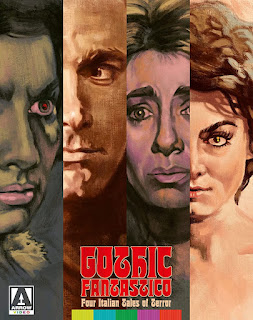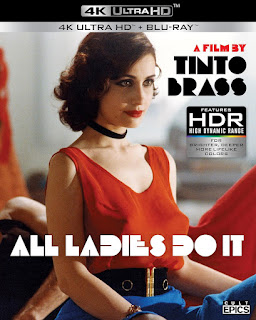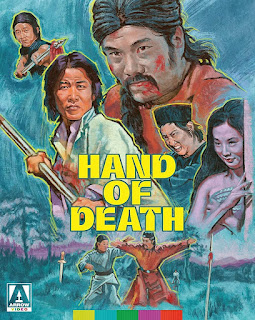Gothic Fantastico: Four Italian Tales of Terror
Things get started in high fashion with Lady Morgan’s Vengeance (1965), a uniquely Italian ghost story that begins as a predictable melodrama but culminates in an undead orgy of death! That might be hyperbole considering director Massimo Pupillo’s take on the material is fairly understated for most of the film but it works its way up to something special. Cuckolded by her husband, Lady Morgan mourns for her supposedly deceased former fiancé (actually an amnesia victim) and suspects her servants of conspiring to do her in. After the dirty deed actually happens, our heroine returns to save her lover and prevent her murderers – now vampiric spirits – from wreaking more havoc beyond the grave.
Visually cut and dry, Lady Morgan’s Vengeance makes up for its lack of style some rousing performances (including an icy debut from genre regular Erika Blanc and villainous turn by Paul Muller) and an unusual narrative format that tells the second half of the story in flashback. Pupillo’s film plays with the supernatural rules just enough to keep his audience guessing and drops an exclamation point right before the end titles.
1963’s The Blancheville Monster hits all the Gothic touchstones, cherry-picking plot elements from Poe’s House of Usherand Premature Burial to tell the story of a family reunion that condemns a young woman to death before her 21stbirthday. Roderic De Blancheville keeps his father locked up in a secret room, hoping to prevent him from fulfilling an ancient prophecy. But someone is stalking the castle at night, leaving a trail of bodies in their wake.
Viewed back-to-back, director Alberto De Martino’s film shares more than a few copycat moments with Pupillo’s, some almost line for line. But Blancheville is the classier of the two, with more creative shadow play and camerawork that emulate the international hits produced by Roger Corman. It’s the story that peters out this time, populated with characters whose fate never generates much suspense.
The Third Eye (1966) jumps into modern times with director Mino Guerrini crafting a Psycho-inspired tale of a messed-up momma’s boy (who also happens to be a taxidermist) murdering local women after posing them beside his dead fiancé. Even with a healthy amount of perverse sexual hang-ups and familial angst, the film is only mildly engaging, saddled with a script that pushes and pulls in different directions. Erika Blanc reappears fine form (and in a dual role) but Franco Nero isn’t quite up to the acting challenge he’s offered. Guerrini throws in some cool Hitchcock flourishes for good measure though.
A much better example of neo-gothic is Damiano Damiani’s The Witch (1966), full of erotic trimmings and supernatural subtext. An overconfident playboy is lured into a run-down palazzo where two women – the alluring Aura and her once-beautiful mother Consuelo Lorente – manipulate him for their own ends. Although the material is stretched a bit, Damiani masterfully manipulates his audience with hints of witchcraft, madness, sexual addiction. A real showcase for actress Rosanna Schiaffino, her performance as Aura is a template for every other satanic siren of the silver screen.
Arrow’s set is outstanding in every department, from the new 2K restorations to the commentary tracks, video introductions, interviews and essays. It’s the best treat to come along for fans of Italian cinema in a long time. Additional extras include an 80-page book and fold-out double-sided poster. Do not hesistate!




Comments
Post a Comment